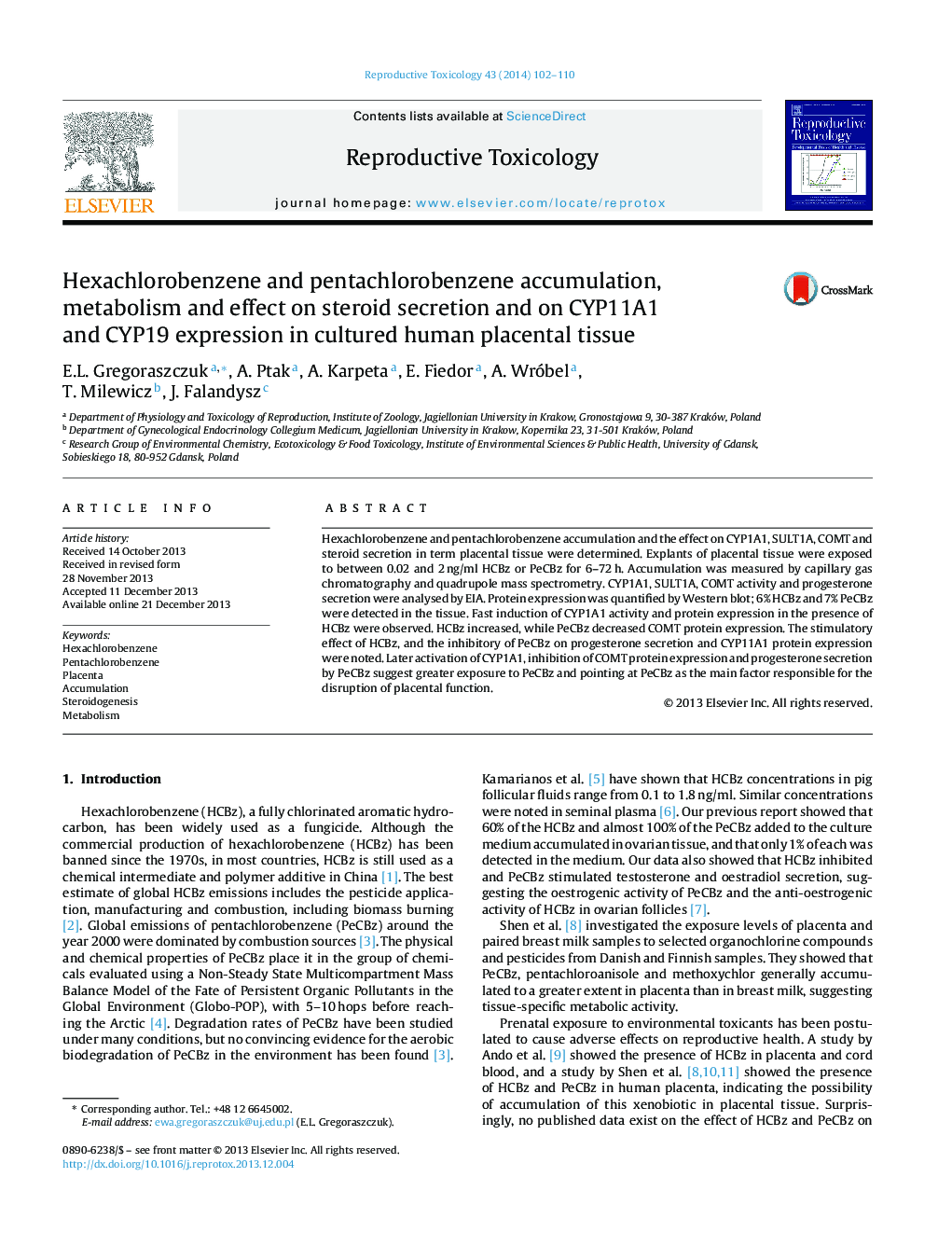| Article ID | Journal | Published Year | Pages | File Type |
|---|---|---|---|---|
| 2593563 | Reproductive Toxicology | 2014 | 9 Pages |
•HCBz and PeCBz do not accumulate in placental tissue in vitro.•Fast induction of CYP1A1 activity and protein expression in the presence of HCBz, but later induction in the presence of PeCBz.•Stimulatory action of HCBz and inhibitory of PeCBz on COMT protein expression.•Opposite action, stimulatory of HCBz and inhibitory of PeCBz on progesterone secretion.•Inhibitory action of HCBz, in all doses and stimulatory in a smallest dose of PeCBz on estradiol secretion.
Hexachlorobenzene and pentachlorobenzene accumulation and the effect on CYP1A1, SULT1A, COMT and steroid secretion in term placental tissue were determined. Explants of placental tissue were exposed to between 0.02 and 2 ng/ml HCBz or PeCBz for 6–72 h. Accumulation was measured by capillary gas chromatography and quadrupole mass spectrometry. CYP1A1, SULT1A, COMT activity and progesterone secretion were analysed by EIA. Protein expression was quantified by Western blot; 6% HCBz and 7% PeCBz were detected in the tissue. Fast induction of CYP1A1 activity and protein expression in the presence of HCBz were observed. HCBz increased, while PeCBz decreased COMT protein expression. The stimulatory effect of HCBz, and the inhibitory of PeCBz on progesterone secretion and CYP11A1 protein expression were noted. Later activation of CYP1A1, inhibition of COMT protein expression and progesterone secretion by PeCBz suggest greater exposure to PeCBz and pointing at PeCBz as the main factor responsible for the disruption of placental function.
